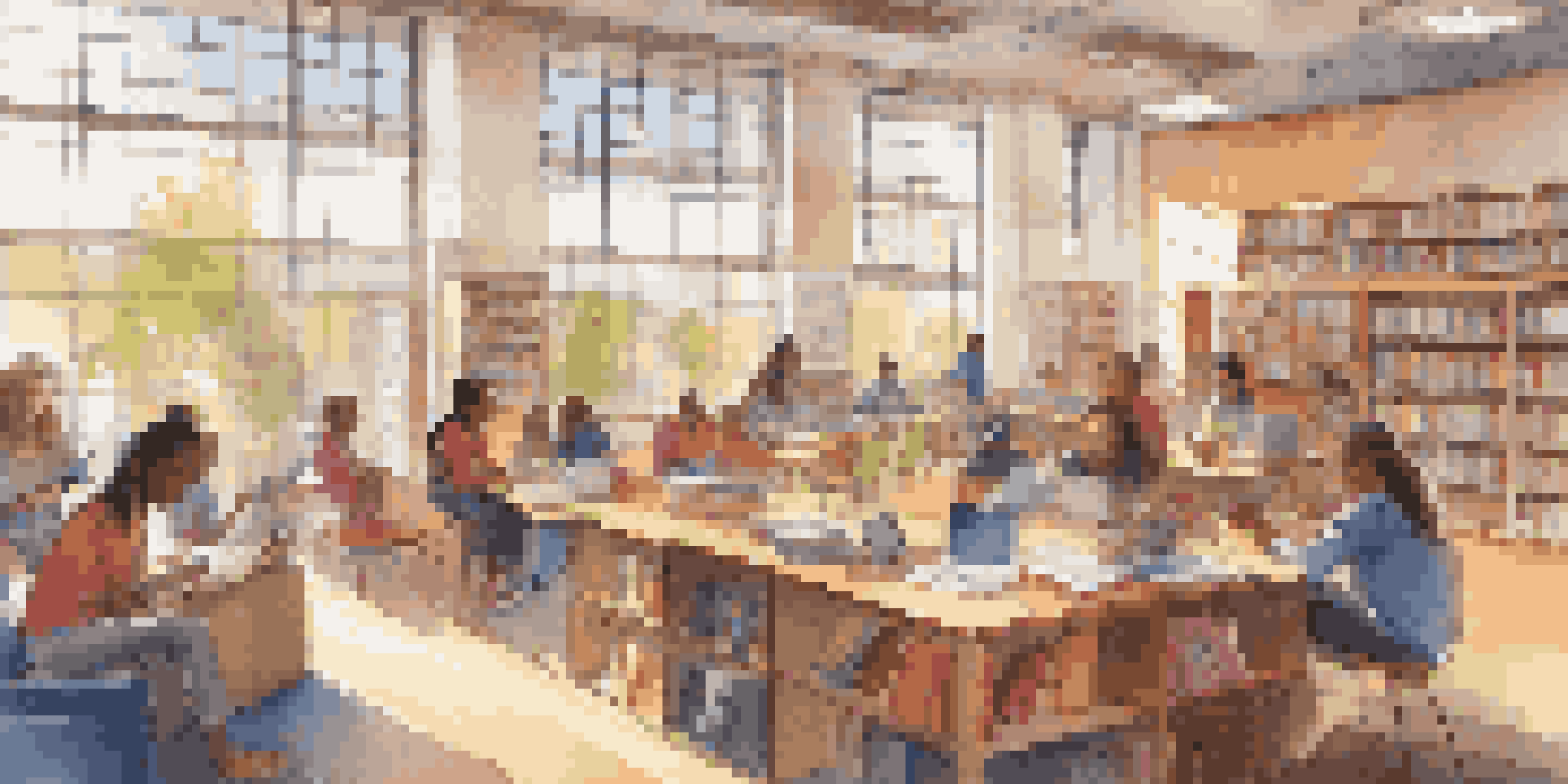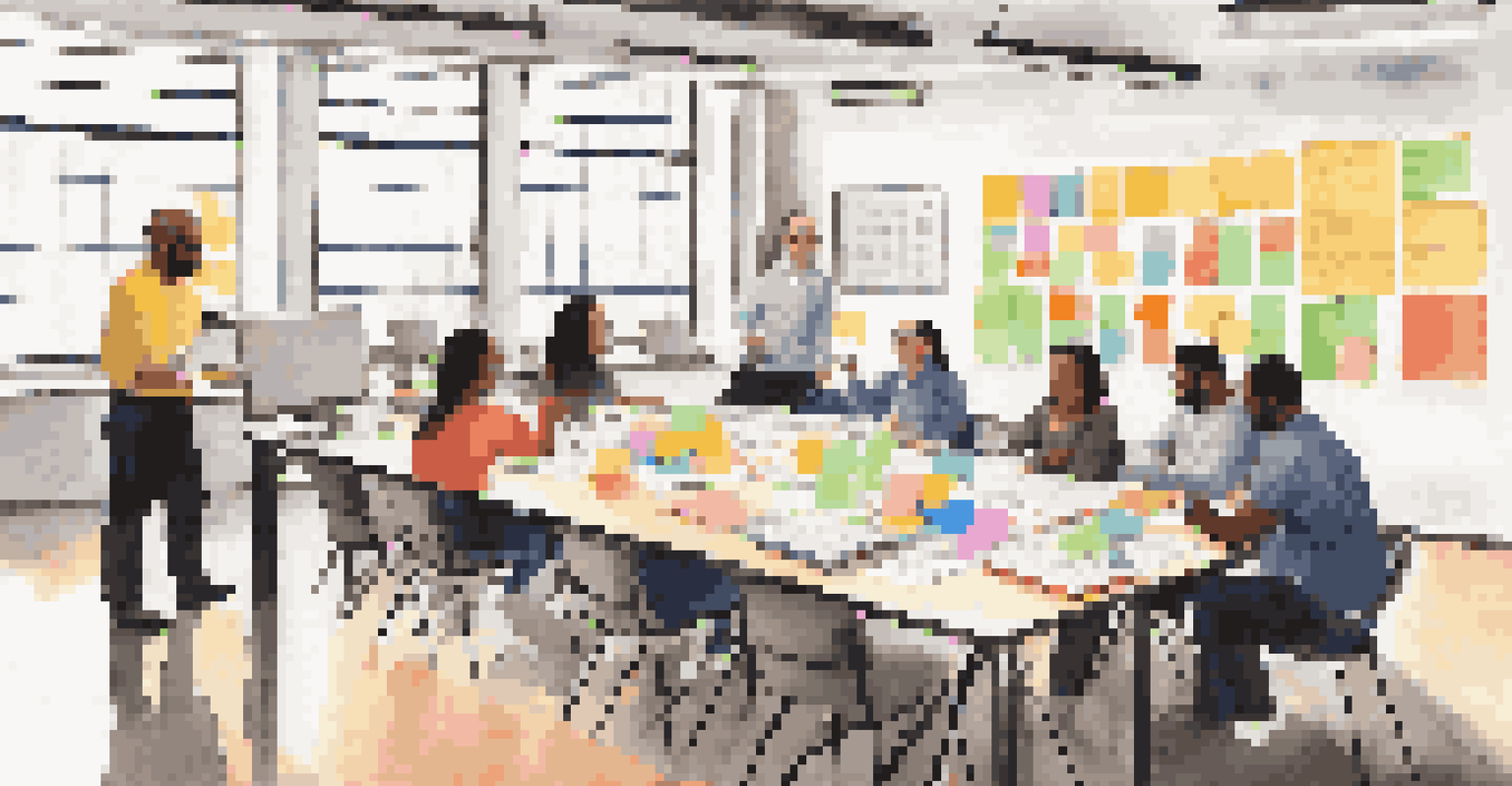The Influence of Open Educational Resources on Curriculum Reform

Understanding Open Educational Resources (OER)
Open Educational Resources, or OER, are teaching and learning materials that are freely accessible to anyone. These resources can include textbooks, videos, courses, and more, all available online. The key aspect that sets OER apart is their open license, allowing educators to adapt and modify the content to fit their teaching needs.
Education is the most powerful weapon which you can use to change the world.
Imagine walking into a library where every book can be borrowed, edited, and returned without any fees. This is the essence of OER, providing flexibility and accessibility to learners and educators alike. The rise of OER has significantly influenced how educational content is produced and shared, leading to more inclusive and diverse learning environments.
As we delve into the influence of OER on curriculum reform, it's essential to recognize their potential in democratizing education. They break down barriers related to cost, accessibility, and content quality, paving the way for innovative teaching practices and curriculum developments.
The Role of OER in Curriculum Development
OER plays a crucial role in curriculum development by providing educators with a wealth of resources to choose from. This abundance allows teachers to curate materials that best fit their students' needs and learning styles, fostering a more personalized educational experience. Moreover, it encourages collaboration among educators to share resources and best practices.

For example, a science teacher may find an engaging video on renewable energy that complements their existing lesson plan. By integrating OER, they can enhance their curriculum, making it more relevant and engaging for students. This adaptability is essential in today’s fast-paced educational environment, where information evolves rapidly.
Furthermore, OER supports a culture of continuous improvement in curriculum development. Educators can easily update and modify content based on feedback and emerging trends, ensuring that their teaching remains current and effective.
Enhancing Accessibility and Equity in Education
One of the most significant impacts of OER is the enhancement of accessibility and equity in education. Traditional educational resources can be costly, often putting them out of reach for many students. In contrast, OER provides free access to high-quality materials, leveling the playing field for learners from diverse backgrounds.
The great thing about technology is that it allows us to connect and share knowledge in ways that were previously unimaginable.
Think of OER as a bridge that connects students with resources they might not otherwise afford. By removing financial barriers, OER opens doors for underprivileged students, ensuring they have the same opportunities to succeed as their peers. This shift is crucial in fostering an equitable educational landscape.
Moreover, OER can be adapted to meet the needs of various learners, including those with disabilities. By offering resources that are customizable, educators can create inclusive environments that cater to all students, reinforcing the notion that every learner deserves access to quality education.
Fostering Collaboration Among Educators
OER encourages collaboration among educators by creating a shared pool of resources that can be modified and improved upon collectively. Teachers can contribute their own materials, share insights, and learn from one another, fostering a sense of community. This collaborative spirit is essential for driving curriculum reform.
For instance, a group of language arts teachers might collaborate to develop a comprehensive reading program using OER. By pooling their knowledge and resources, they can create a richer curriculum that benefits all students. This kind of teamwork not only enhances the curriculum but also builds professional relationships among educators.
In addition, this collaboration extends beyond individual schools or districts, reaching global networks of educators. Through platforms that host OER, teachers can connect with peers worldwide, sharing diverse perspectives and innovative teaching strategies that can inspire curriculum changes.
Driving Innovation in Teaching Practices
The integration of OER into educational practices has spurred innovation in teaching methods. By utilizing diverse resources, educators are inspired to adopt new techniques that enhance student engagement and learning outcomes. The flexibility offered by OER allows teachers to experiment with different approaches, such as project-based learning or flipped classrooms.
For example, an educator might use an interactive OER module to teach complex mathematical concepts, enabling students to learn at their own pace. This innovative approach not only makes learning more enjoyable but also helps students grasp challenging material more effectively. Such creativity in teaching can lead to significant curriculum advancements.
Moreover, as educators embrace OER, they are more likely to share successful methodologies with their peers, creating a ripple effect of innovation throughout the educational community. This culture of sharing and experimentation is vital for ongoing curriculum reform.
Challenges in Implementing OER
While OER has immense potential, there are challenges in its implementation that need to be addressed. One significant hurdle is the lack of awareness and understanding among educators about how to effectively use OER in their teaching. Many may not realize the wealth of resources available or how to integrate them into their curriculum.
Additionally, concerns about the quality and credibility of OER can deter educators from fully embracing these resources. It’s essential for teachers to evaluate materials critically and ensure they meet educational standards. Providing guidance on how to assess OER can help alleviate these concerns and encourage wider adoption.
Furthermore, technical issues such as internet access and digital literacy can impact the effectiveness of OER in certain communities. Ensuring that all students have the necessary tools and skills to access these resources is crucial for maximizing their benefits.
Future Directions for OER and Curriculum Reform
Looking ahead, the future of OER in curriculum reform is promising. As technology continues to evolve, we can expect even more innovative resources and platforms that facilitate access to high-quality educational materials. The integration of artificial intelligence and personalized learning will likely enhance the effectiveness of OER in meeting diverse student needs.
Moreover, increased advocacy for OER among educational institutions and policymakers will drive further adoption and funding. As awareness grows, we can expect more educators to leverage OER, leading to a more collaborative and resource-rich learning environment. This shift will inevitably influence curriculum reform on a broader scale.

Ultimately, the ongoing evolution of OER presents an exciting opportunity for transforming education. By harnessing the power of open resources, we can create a more inclusive, equitable, and innovative educational landscape that benefits all learners.